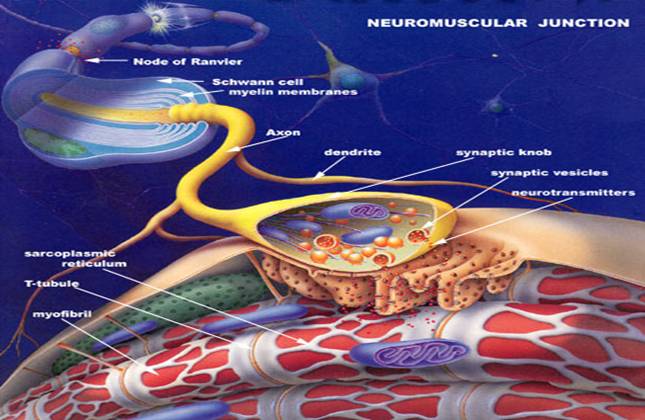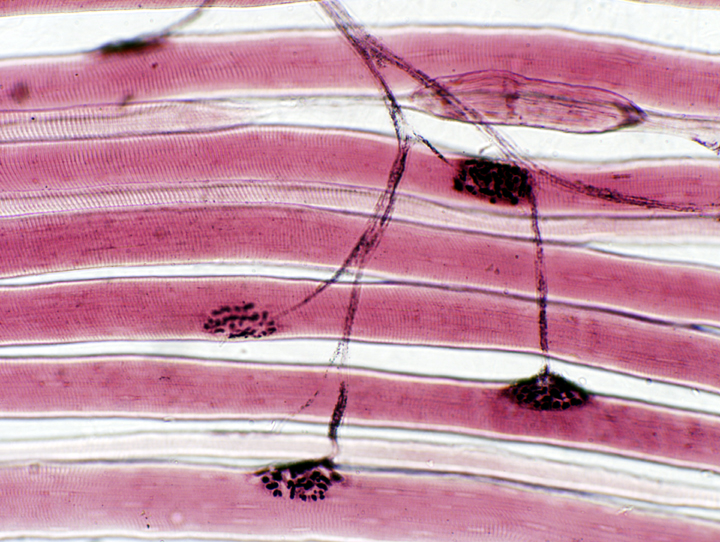General Biology II, lecture on Neuromuscular Function
XVII. Neuro-Skeletal Muscular Action
(making joints work)
A. Efferent motor neurons secrete ACh
1. ACh/nicotinic-receptor binding depolarizes the muscle cell
a. depolarization travels into the cell via T-tubules
i. causes the release of Ca++ from the sarcolemma
B. What the heck is the sarcolemma, and where is it?
1. muscle cells are called muscle fibers
2. muscle fibers are made up of many myofibrils
a. myo = muscle
3. myofibrils of myofilaments
a. actin
b. myosin
c. myofilaments move to make the muscle contract
d. muscles cannot forceably expand
4. Sarcolemma
a. sarco = flesh, lemma = sheath
b. bag that surrounds each muscle cell
c. sarcoplasmic reticulum replaces endoplasmic reticulum
in the cell, surrounds the myofibrils
d. stores Ca++ (short term,
bones store Ca++ long term)
necessary for muscle contraction
i. Osteoblasts (osteo = bone) add, Osteoclasts remove,
Ca++ to/from bone
ii. ñ muscle utilization ð ñ osteoblast activity
C. Sliding filament theory
1. myosin heads bind to actin
a. Ca++ makes this happen
2. binding causes a configuration change,
myosin heads pull actin filaments across myosin
3. ATP causes myosin head to unbind from actin
4. another nerve signal releases more Ca++
5. ATP moves Ca++ back into sarcoplasmic reticulum
6. so active muscles shorten (ATP and Ca++ necessary)
a. muscles that are lengthening are relaxing
D. the Nervous System Grades the force of muscle contraction
1. single motor axon innervates a single muscle fiber (cell)
a. one motor neuron (many axons) innervates a number
of muscle fibers = Motor Unit
i. smallest functional unit
(1) magnitude of contractile function depends
on innervation ratio (fibers/neuron)
2. graded force is dependent upon motor unit recruitment
a. degree of shortening
b. local direct motor innervation
i. segmental gradation
3. motor units are recruited in a fixed order
a. weakest to strongest
i. allows fine motor actions
4. ñ firing rate ñ force
a. more effective summation
E. Flexors and Extensors
1. opposing muscles are the way arms and legs move
without muscles which can forceably extend
2. example: biceps = flexor, triceps = extensor
F. Fast (white) and slow (red) muscle
1. all muscles are a mixture of both types of fiber
a. some have more of one type, some another
2. fast muscle has more of the enzymes that favor glycolysis
3. slow has more of the enzymes which favor oxidative phosphorylation

